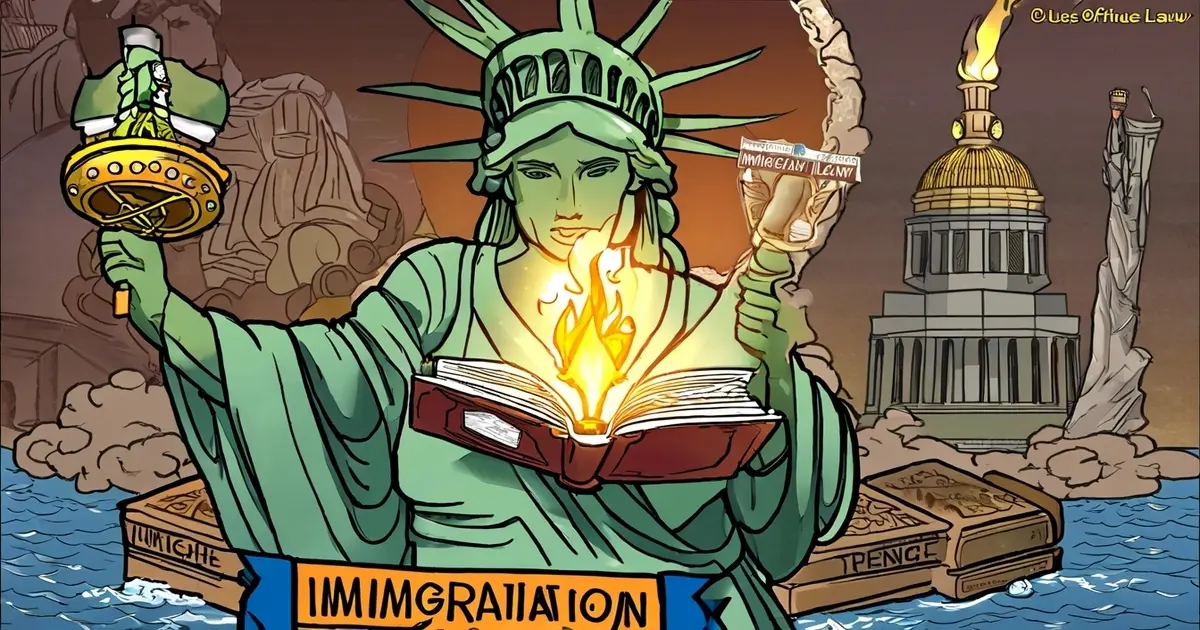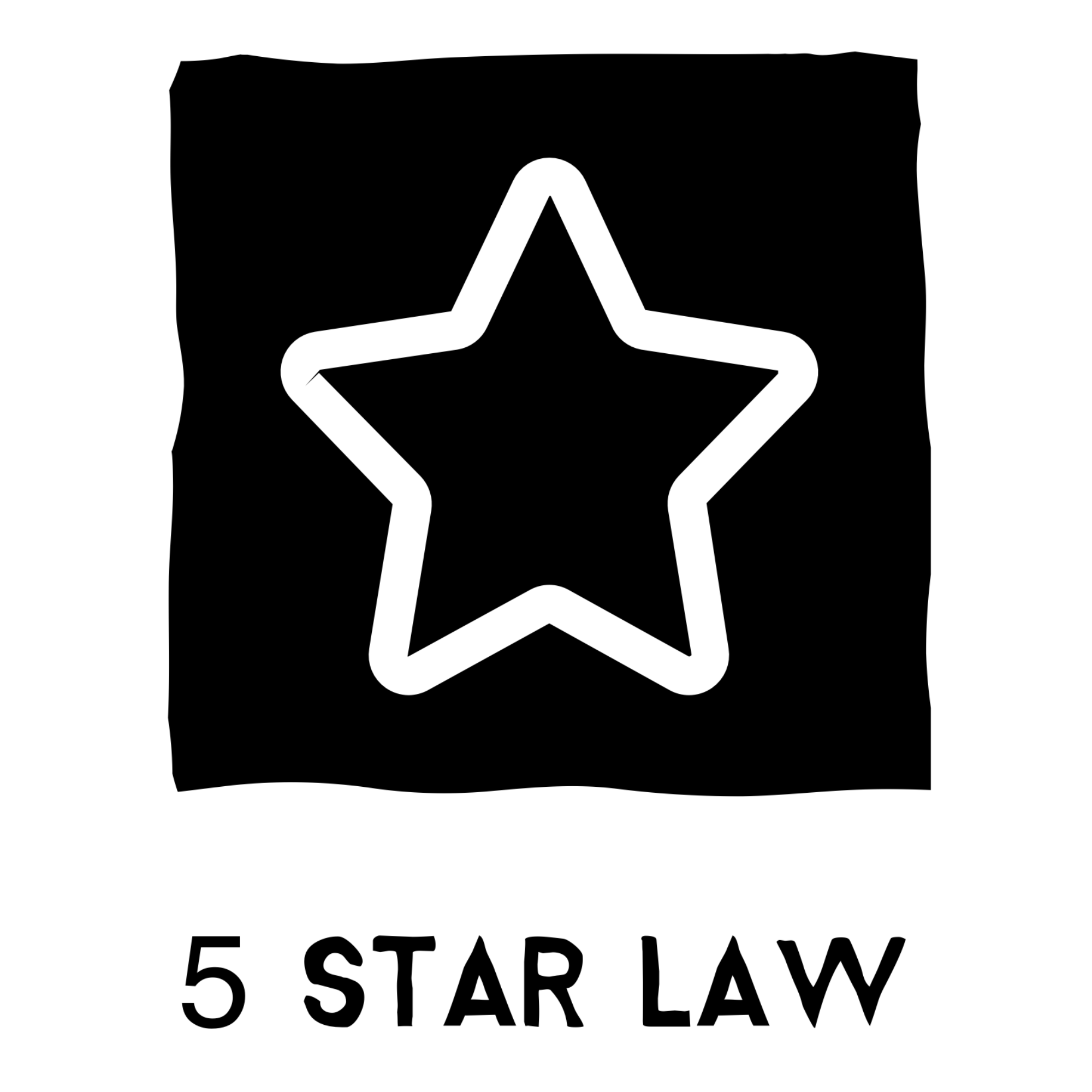Immigration Law: Comprehensive Guide to Navigating U.S. Policies
Immigration law, a complex web of issues including naturalization that has evolved significantly over centuries, is one of the most discussed topics worldwide, particularly in the United States, affecting numerous persons. From its early roots in national sovereignty and security, including the armed forces and world wars, to addressing modern global challenges and humanitarian needs through policies like the United States naturalization process, it shapes societies and destinies.
Whether you're an individual dreaming of new opportunities or a family seeking safety and stability, understanding this intricate legal framework of naturalization, permanent employment, and administration is crucial for persons. It's not just about crossing borders; it's about navigating through a labyrinth of policies, procedures, administration, and paperwork that can seem overwhelming at first glance for persons seeking naturalization, where time is a critical factor.
This post aims to demystify immigration and naturalization law for you, breaking down its complexities and the administration of unused visas into digestible pieces so you and other persons can confidently move forward.
Table Of Contents
Key Takeaways
- Dual Classification of Visa Statuses: The U.S. immigration system distinguishes between non-immigrant visas (temporary) and immigrant visas, which offer a path to permanent residency or citizenship through naturalization. This fundamental categorization affects how individuals plan their entries into the U.S., depending on their long-term goals.
- Role of Key Agencies: Three central agencies—U.S. Citizenship and Immigration Services (USCIS), Immigration and Customs Enforcement (ICE), and Customs and Border Protection (CBP)—play critical roles in administering immigration laws. These agencies handle everything from processing visa applications to enforcing regulations at borders and points of entry, highlighting the complexity and breadth of U.S. immigration processes.
- Impact of Historical Legislation: Significant historical laws, such as the 1965 Immigration Act and the 1996 Illegal Immigration Reform and Immigrant Responsibility Act, have shaped the modern immigration landscape in the U.S. Understanding these laws is vital for grasping current policies and how they influence individuals and demographic trends.
- Priority and Preference Systems: In family-based and employment-based immigration pathways, priority dates and preference systems determine the order in which applicants can receive visas. These systems underscore the competitive and regulated nature of U.S. immigration, prioritizing skills, familial relationships, and other criteria to maintain balanced immigration numbers.
- Paths to Permanent Residency: Various routes, such as employment, family sponsorship, asylum, or the diversity lottery, enable individuals to apply for permanent residency. Each path has specific requirements and procedures, illustrating the tailored approaches within the immigration system to address different individual circumstances and contributions to society.
- Special Provisions and Programs: The U.S. immigration law includes provisions for exceptional cases like the EB-5 investor visa, which requires significant investment and job creation, and temporary visa classifications for students, tourists, and workers. These provisions highlight the system’s flexibility and its aim to cater to a wide range of economic, educational, and personal needs within the framework of controlled entry and residency within the country.
Understanding U.S. Immigration System
Status Types
The U.S. immigration system classifies individuals into two main statuses: non-immigrant and immigrant, including aspects of naturalization and allocation of unused visas. Non-immigrants, sponsored by persons or administration, enter the United States temporarily. They include tourists, students, and business travelers. Immigrants, on the other hand, plan to live permanently in the United States and pursue LPR (Legal Permanent Residency) and naturalization under the current administration.
Non-immigrant visas are for those who wish to stay temporarily. There are many types, each with its own rules. For example, student visas require enrollment in an educational program. Tourist visas limit how long you can stay.
Immigrant statuses in the United States involve a path to permanent residency (LPR) or citizenship through naturalization, often after a year. This naturalization process is more complex and usually requires sponsorship from family or employers in the United States, typically after a year as an LPR.
Key Agencies
Three primary agencies oversee immigration law in the United States: USCIS, ICE, and CBP.
USCIS (United States Citizenship and Immigration Services) handles applications for legal entry and stays within the country. ICE (Immigration and Customs Enforcement) enforces laws governing border control in the United States. CBP (Customs and Border Protection) manages security at ports of entry in the United States. Each agency is critical in maintaining lawful immigration processes yearly.
Understanding these agencies helps navigate U.S. immigration policies effectively.
Visa Categories
Visas are categorized based on travel purpose: work, study, visitation, or permanent residency in the United States for a year.
Work visas allow employment in specific sectors like technology or agriculture in the United States for a year. Study visas in the United States permit attendance at accredited institutions for education purposes for a year. Visitor visas enable short-term travel for tourism or business meetings without employment rights in the United States for up to a year. After meeting specific criteria, permanent residency offers a chance to live indefinitely within the state. They know which category fits your situation in the United States before applying.

Historical Immigration Laws and Their Impact
1965 Act Significance
The Immigration and Nationality Act of 1965 marked a pivotal change in the United States. Before it, policies favored European immigrants. This act ended that bias.
It introduced a system based on family reunification and skills in the United States. Suddenly, people from Asia, Africa, and Latin America had better chances to immigrate to the United States, and the diversity in the U.S. population increased.
1996 Reform Impacts
The Illegal Immigration Reform and Immigrant Responsibility Act of 1996 in the United States established stricter rules to control illegal immigration more effectively.
This law increased penalties for visa overstays and illegal entry and made deportations quicker for certain crimes. Deportation numbers rose significantly after this act was enforced.
Post-9/11 Policies
After the tragic events of September 11, 2001, immigration policies tightened further. Security measures intensified at borders and airports. Visas have become more challenging for many foreigners.
These changes reflected growing concerns about national security. Yet, they also led to debates about civil liberties and discrimination against immigrants.
Family-Based Immigration Process
Priority Dates
Understanding priority dates is crucial in the family-based immigration process. These dates show when a visa becomes available. They depend on your relative's category within the family preference system.
The U.S. government publishes a Visa Bulletin each month. It lists priority dates for each category. You can proceed with your application if your date matches or exceeds the one listed.
Sponsoring Relatives
To sponsor a relative, you must meet specific requirements. First, you must be a U.S. citizen or a lawful permanent resident (LPR). You also have to prove that you can support your relative financially at 125% above the poverty line.
The documents needed include proof of your status (like a naturalization certificate), financial records, and Form I-130 (Petition for Alien Relative). This form starts the sponsorship process.
Adjustment vs Consular
There are two main paths: adjustment of status and consular processing.
- Adjustment of status happens if your relative is already in the U.S. They apply to adjust their current visa to an immigrant visa.
- Consular processing is for relatives outside the U.S. They go through their local U.S. embassy or consulate.
Both options have pros and cons:
- Adjustment allows staying in the U.S. during processing but might take longer due to backlog.
- Consular might be quicker but requires leaving the U.S. until it's complete.
Employment-Based Immigration Procedures
Preference System
The employment-based immigration process uses a preference system. This system sorts applicants into categories based on their job skills and the demand for those skills in the U.S.
First, there are five preference categories. Each has its requirements and quotas. For instance, the first preference (EB-1) is for outstanding professors, researchers, and multinational executives. The second (EB-2) includes professionals holding advanced degrees.
Secondly, this system ensures that people with critical skills or exceptional abilities get priority. However, it also means some applicants might wait longer for a visa.
Labor Certification
Labor certification is crucial for many employment visas, especially PERM visas. It proves that hiring a foreign worker will improve U.S. job opportunities.
Firstly, employers must conduct a recruitment campaign to find suitable U.S. employees before filing for labor certification. Then, they applied to the Department of Labor, showing no qualified Americans were available for the job.
This process can be lengthy but is essential to protect both U.S. workers” and immigrant employees' rights.
H-1B Visa Steps
Obtaining an H-1B visa involves several steps tailored to skilled specialty occupation workers.
Here's how it typically goes:
- An employer must offer you a job in your field of expertise.
- They then file an H-1B petition with USCIS on your behalf.
- You must apply for a visa at a U.S. embassy or consulate once USCIS approves the petition.
Key points about H-1B visas include:
- They're capped annually at 65,000, with additional spots reserved under certain conditions.
- These visas allow dual intent, meaning you can pursue permanent residency while working temporarily in the States.
Temporary Visa Classifications Overview
Business & Tourism
B-1 and B-2 visas cater to those visiting the U.S. for business or tourism. The B-1 visa is perfect for short-term business trips. It allows you to negotiate contracts, attend conferences, and conduct similar activities. On the other hand, the B-2 visa suits tourists who want to see attractions or visit family.
Applying for these visas requires proving your trip's purpose is temporary and showing plans to return home afterward. Many applicants share their travel itinerary or letters from employers as evidence.
Student Visas
The F-1 visa serves international students attending U.S. schools full-time. To qualify, one must be enrolled in an academic program leading to a degree or certificate.
Students should prove they have enough funds for their stay without working illegally. Once schools accept students into their programs, they issue an I-20 form. This document is crucial when applying for an F-1 visa.
Work Visas
Work visas, such as H, L, and O, allow foreign workers to pursue various employment opportunities in the U.S. Each category has specific requirements and purposes.
H visas are mainly for skilled workers in America experiencing labor shortages. L visas work best for employees of multinational companies transferring within the organization. O visas target individuals with extraordinary abilities or achievements.
To obtain these work visas:
- Employers usually need to file a petition on behalf of the applicant
- Applicants should provide proof of qualifications relevant to their job offer
Understanding each category’s nuances helps determine the best fit based on circumstances and goals.
Permanent Immigration Guidelines
Green Card Criteria
Obtaining a Green Card is a significant step for many immigrants. It allows them to live and work in the U.S. permanently. There are two main paths: through employment or family ties.
There is a system of preference categories for employment-based Green Cards. They range from workers with extraordinary abilities to unskilled laborers. The total number of visas issued yearly depends on these categories and the quota calculations set by immigration law.
Family-based Green Cards require you to have close relatives who are U.S. citizens or permanent residents. The process varies depending on your relationship with your sponsor. Immediate family members like spouses and children under 21 have no quota limits, unlike extended family members.
Diversity Lottery
The Diversity Lottery Program offers individuals from countries with low immigration rates to the United States another path to permanent residency. Up to 50,000 visas are available through this program. Applicants must meet simple but strict eligibility criteria based chiefly on their country of birth and education/work experience levels.
This lottery is highly competitive due to its random selection process and limited slots compared to applicants worldwide.
Special Cases
Among exceptional cases leading to permanent residency, the EB-5 investor visa stands out significantly.
To qualify for an EB-5 visa, individuals must invest $1 million (or $500,000 in targeted employment areas) in creating at least ten jobs for U.S. citizens or other lawful permanent residents within two years.
This path not only aids in obtaining a green card but also boosts the U.S. economy by attracting foreign investment and generating employment opportunities.
Refugee, Asylee Protocols, and Other Humanitarian Reliefs
Refugee Status
Refugee status is for people fleeing their country because of persecution. This can be due to race, religion, nationality, or political opinion. To qualify as a refugee, individuals must apply outside the U.S. They must also prove they cannot return home safely.
The process involves multiple steps. First, one applies through the United Nations High Commissioner for Refugees (UNHCR). Then, an interview with a U.S. officer decides if they meet the criteria.
Asylum Protection
Asylum protection is similar but different from refugee status. People already in the U.S. or at its border can apply for asylum. Like refugees, they must fear persecution in their homeland.
Applying requires filling out Form I-589 within one year of arrival. The decision rests on whether their fears of persecution are well-founded.
Temporary Protected Status (TPS)
TPS shields individuals from countries experiencing problems like natural disasters or armed conflicts. To be eligible for TPS:
- It would be best if you were a national of a designated country.
- File during open registration or re-registration periods. Countries currently under TPS include El Salvador and Haiti, among others.
Benefits include staying in the U.S. without fear of deportation and working legally.
Humanitarian Parole
Humanitarian parole allows entry into the U.S. for urgent humanitarian reasons or significant public benefit. Applying involves submitting Form I-131 along with evidence supporting your request. Common reasons include medical treatment unavailable in one's home country.
This parole does not offer permanent residence but can be crucial in emergencies.

Diversity Visa Program and Citizenship Requirements
Visa Lottery Entry
The Diversity Visa Lottery is a unique opportunity. It opens doors to individuals from countries with low immigration rates to the U.S. Applicants must have at least a high school education or equivalent to enter. Or, they need two years of work experience in an occupation requiring at least two years of training.
Eligibility hinges on being from a qualifying country, too. The list changes yearly based on immigration patterns. This ensures diversity in the immigrant population.
Naturalization Process
Becoming a U.S. citizen through naturalization involves several steps. First, you must meet residency requirements. This usually means living in the U.S. for five years as a lawful permanent resident (LPR)—or three years if married to a U.S. citizen.
Next comes the citizenship test, which focuses on English language skills and knowledge of U.S. history and government principles. Preparing for this test can be challenging, but resources are available to help applicants succeed.
Good Moral Character
Good moral character plays a crucial role in citizenship applications. Applicants must show they've lived by society's laws and values during their time in the U.S. Evidence includes paying taxes, supporting dependents, and avoiding criminal activities.
Missteps like lying during interviews or submitting false documents can derail your application. It's more than just following laws; it's about demonstrating integrity throughout your journey toward citizenship.
Legal Resources and Support for Immigrants
Finding an Attorney
Seeking a qualified immigration attorney is crucial. They understand the complexities of immigration law. It's their job to guide you through the process smoothly.
An attorney can offer personalized advice suited to your case. They know how laws might affect your application, including those related to the Diversity Visa Program and Citizenship Requirements discussed earlier. Finding a good lawyer can make all the difference in navigating these waters successfully.
Legal Aid Organizations
There are free or low-cost legal aid organizations specializing in immigration matters. These groups provide valuable assistance without breaking the bank.
They often have attorneys and paralegals ready to help with applications, interviews, and hearings. Examples include non-profits like The Immigration Legal Resource Center or local community centers offering legal services. Utilizing such resources ensures you're not alone in this journey.
Official USCIS Resources
The USCIS website is a goldmine of information for immigrants. It offers guides, forms, and FAQs on various aspects of immigration law.
It's essential to use official sources like USCIS for accurate information. This helps avoid scams that prey on immigrants by providing misleading guidance.
Closing Thoughts
Navigating the maze of U.S. immigration law feels like trying to solve a Rubik's Cube blindfolded, right? We've walked through the historical corridors, untangled family and employment-based procedures, and even peeked into the lesser-known alleys of visas and humanitarian reliefs. It's a complex puzzle, but understanding each piece brings us closer to the whole picture. Your journey doesn't end here, though. Laws evolve, and staying informed is your best strategy in this ever-changing landscape.
Here's your call to action: Dive deeper. Knowledge is your passport whether you dream of a new start, seek refuge or chase opportunities. Seek out legal advice tailored to your story. Remember, every big journey begins with a single step. Let this be yours. Start your adventure informed and empowered.
Frequently Asked Questions
Related Post
Immigration Lawyers
Navigating the complex maze of immigration laws and regulations can feel daunting for an immigrant without legal experience, making seeking legal counsel an essential step in handling this legal matter.
Read MoreCitizenship and Naturalization Lawyer
Over 700,000 naturalization applicants become naturalized U.S. citizens each year, navigating the complex maze of legal requirements and paperwork involved in the citizenship process, including their naturalization application, among other citizenship applications.
Read MoreImmigration Appeals Lawyer
Navigating the complexities of immigration law can feel like a daunting journey, especially when facing the hurdle of an appeal to become a permanent resident in the United States and a fight against government policies.
Read MoreInvestor Immigration Lawyer
Over 10,000 individuals globally leap each year to invest in a future abroad, making investor immigration an increasingly popular path.
Read MoreEmployment-Based Immigration Lawyer
Navigating the complex world of employment-based immigration for a foreign national can feel like trying to find your way through a maze without a map, especially when dealing with civil documents in the United States as an individual.
Read MoreDeportation Defense Lawyer
Nearly 70% of immigrants facing deportation in the U.S. navigate the complex legal system without a lawyer in their immigration proceedings, significantly diminishing their chances of a favorable outcome before an immigration judge in removal proceedings.
Read More






